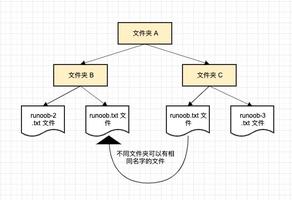谈谈我对JavaScript中typeof和instanceof的深入理解
这次主要说说javascript的类型判断函数typeof和判断构造函数原型instanceof的用法和注意的地方。
typeof
先来说说typeof吧。首先需要注意的是,typeof方法返回一个字符串,来表示数据的类型。
typeof 是一个一元运算,放在一个运算数之前,运算数可以是任意类型。
它返回值是一个字符串,该字符串说明运算数的类型。typeof 一般只能返回如下几个结果:
number,boolean,string,function,object,undefined。我们可以使用 typeof 来获取一个变量是否存在,如 if(typeof a!="undefined"){alert("ok")},而不要去使用 if(a) 因为如果 a 不存在(未声明)则会出错,对于 Array,Null 等特殊对象使用 typeof 一律返回 object,这正是 typeof 的局限性。
语法讲解
我们先看看各个数据类型对应typeof的值:
| 数据类型 | Type |
|---|---|
| Undefined | “undefined” |
| Null | “object” |
| 布尔值 | “boolean” |
| 数值 | “number” |
| 字符串 | “string” |
| Symbol (ECMAScript 6 新增) | “symbol” |
| 宿主对象(JS环境提供的,比如浏览器) | Implementation-dependent |
| 函数对象 | “function” |
| 任何其他对象 | “object” |
再看看具体的实例:
// Numbers
typeof 37 === 'number';
typeof 3.14 === 'number';
typeof Math.LN2 === 'number';
typeof Infinity === 'number';
typeof NaN === 'number'; // 尽管NaN是"Not-A-Number"的缩写,意思是"不是一个数字"
typeof Number(1) === 'number'; // 不要这样使用!
// Strings
typeof "" === 'string';
typeof "bla" === 'string';
typeof (typeof 1) === 'string'; // typeof返回的肯定是一个字符串
typeof String("abc") === 'string'; // 不要这样使用!
// Booleans
typeof true === 'boolean';
typeof false === 'boolean';
typeof Boolean(true) === 'boolean'; // 不要这样使用!
// Symbols
typeof Symbol() === 'symbol';
typeof Symbol('foo') === 'symbol';
typeof Symbol.iterator === 'symbol';
// Undefined
typeof undefined === 'undefined';
typeof blabla === 'undefined'; // 一个未定义的变量,或者一个定义了却未赋初值的变量
// Objects
typeof {a:1} === 'object';
// 使用Array.isArray或者Object.prototype.toString.call方法可以从基本的对象中区分出数组类型
typeof [1, 2, 4] === 'object';
typeof new Date() === 'object';
// 下面的容易令人迷惑,不要这样使用!
typeof new Boolean(true) === 'object';
typeof new Number(1) ==== 'object';
typeof new String("abc") === 'object';
// 函数
typeof function(){} === 'function';
typeof Math.sin === 'function';
我们会发现一个问题,就是typeof来判断数据类型其实并不准确。比如数组、正则、日期、对象的typeof返回值都是object,这就会造成一些误差。
所以在typeof判断类型的基础上,我们还需要利用Object.prototype.toString方法来进一步判断数据类型。
我们来看看在相同数据类型的情况下,toString方法和typeof方法返回值的区别:
| 数据 | toString | typeof |
|---|---|---|
| “foo” | String | string |
| new String(“foo”) | String | object |
| new Number(1.2) | Number | object |
| true | Boolean | boolean |
| new Boolean(true) | Boolean | object |
| new Date() | Date | object |
| new Error() | Error | object |
| new Array(1, 2, 3) | Array | object |
| /abc/g | RegExp | object |
| new RegExp(“meow”) | RegExp | object |
可以看到利用toString方法可以正确区分出Array、Error、RegExp、Date等类型。
所以我们一般通过该方法来进行数据类型的验证
真题检测
但是既然今天说到了typeof,那这里就列出几道题目,来看看自己是否真正掌握了typeof的用法。
第一题:
var y = 1, x = y = typeof x;
x;
第二题:
(function f(f){
return typeof f();
})(function(){ return 1; });
第三题:
var foo = {
bar: function() { return this.baz; },
baz: 1
};
(function(){
return typeof arguments[0]();
})(foo.bar);
第四题:
var foo = {
bar: function(){ return this.baz; },
baz: 1
}
typeof (f = foo.bar)();
第五题:
var f = (function f(){ return "1"; }, function g(){ return 2; })();
typeof f;
第六题:
var x = 1;
if (function f(){}) {
x += typeof f;
}
x;
第七题:
(function(foo){
return typeof foo.bar;
})({ foo: { bar: 1 } });
下面公布答案了,这七题的答案分别是:
"undefined","number","undefined","undefined","number","1undefined","undefined"
做对了几道呢?是不是很大的困惑呢?这几题虽然都有typeof,但是考察了很多javascript的基础噢。下面我们来一一详解。
第一题:
var y = 1, x = y = typeof x;
x;//"undefined"
表达式是从右往左的,x由于变量提升,类型不是null,而是undefined,所以x=y=”undefined”。
变量提升我在这篇文章中提到过,可以看看。
第二题:
(function f(f){
return typeof f();//"number"
})(function(){ return 1; });
传入的参数为f也就是function(){ return 1; }这个函数。通过f()执行后,得到结果1,所以typeof 1返回”number”。这道题很简单,主要是区分f和f()。
第三题:
var foo = {
bar: function() { return this.baz; },
baz: 1
};
(function(){
return typeof arguments[0]();//"undefined"
})(foo.bar);
这一题考察的是this的指向。this永远指向函数执行时的上下文,而不是定义时的(ES6的箭头函数不算)。当arguments执行时,this已经指向了window对象。所以是”undefined”。对this执行不熟悉的同学可以看看这篇文章:深入理解this,对刚刚提到的箭头函数感兴趣的同学可以看看初步探究ES6之箭头函数。
第四题:
var foo = {
bar: function(){ return this.baz; },
baz: 1
}
typeof (f = foo.bar)();//undefined
如果上面那一题做对了,那么这一题也应该不会错,同样是this的指向问题。
第五题:
var f = (function f(){ return "1"; }, function g(){ return 2; })();
typeof f;//"number"
这一题比较容易错,因为我在遇到这道题之前也从来没有遇到过javascript的分组选择符。什么叫做分组选择符呢?举一个例子就会明白了:
var a = (1,2,3);
document.write(a);//3,会以最后一个为准
所以上面的题目会返回2,typeof 2当然是”number”啦。
第六题:
var x = 1;
if (function f(){}) {
x += typeof f;
}
x;//"1undefined"
这是一个javascript语言规范上的问题,在条件判断中加入函数声明。这个声明语句本身没有错,也会返回true,但是javascript引擎在搜索的时候却找不到该函数。所以结果为”1undefined”。
第七题:
(function(foo){
return typeof foo.bar;
})({ foo: { bar: 1 } });
这题其实是一个考察心细程度的题目。形参的foo指向的是{ foo: { bar: 1 } }这个整体。相信这么说就明白了。
好啦。上面的题目都是很好的资源噢。
instanceof
接下来该说说instanceof方法了。instanceof运算符可以用来判断某个构造函数的prototype属性是否存在于另外一个要检测对象的原型链上。
instanceof 用于判断一个变量是否某个对象的实例,如 var a=new Array();alert(a instanceof Array); 会返回 true,同时 alert(a instanceof Object) 也会返回 true;这是因为 Array 是 object 的子类。再如:function test(){};var a=new test();alert(a instanceof test) 会返回
谈到 instanceof 我们要多插入一个问题,就是 function 的 arguments,我们大家也许都认为 arguments 是一个 Array,但如果使用 instaceof 去测试会发现 arguments 不是一个 Array 对象,尽管看起来很像。
如果对原型不太了解,可以看看深入理解原型。
下面我们看看instanceof的实例:
// 定义构造函数
function C(){}
function D(){}
var o = new C();
// true,因为 Object.getPrototypeOf(o) === C.prototype
o instanceof C;
// false,因为 D.prototype不在o的原型链上
o instanceof D;
o instanceof Object; // true,因为Object.prototype.isPrototypeOf(o)返回true
C.prototype instanceof Object // true,同上
C.prototype = {};
var o2 = new C();
o2 instanceof C; // true
o instanceof C; // false,C.prototype指向了一个空对象,这个空对象不在o的原型链上.
D.prototype = new C(); // 继承
var o3 = new D();
o3 instanceof D; // true
o3 instanceof C; // true
但是这里我们需要注意一个问题:
function f(){ return f; }
document.write(new f() instanceof f);//false
function g(){}
document.write(new g() instanceof g);//true
第一个为什么返回false呢?因为构造函数的原型被覆盖了,我们可以看看new f和new g的区别:
以上是 谈谈我对JavaScript中typeof和instanceof的深入理解 的全部内容, 来源链接: utcz.com/z/352304.html









